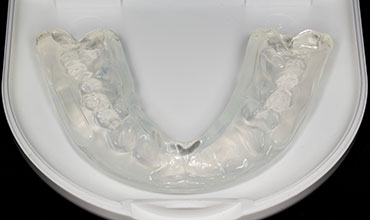
Imagine what it would be like if you suddenly lost one or two of your front teeth. Smiling, talking, eating—everything would suddenly be affected.
Mouthguards, also called mouth protectors, help cushion a blow to the face, minimizing the risk of broken teeth and injuries to your lips, tongue, face or jaw. They typically cover the upper teeth and are a great way to protect the soft tissues of your tongue, lips and cheek lining. Knowing how to prevent injuries like these is especially important if you participate in organized sports or other recreational activities.
When it comes to protecting your mouth, a mouthguard is an essential piece of athletic gear that should be part of your standard equipment from an early age. In fact, studies show that athletes are 60 times more likely to suffer harm to the teeth if they’re not wearing a mouthguard. While collision and contact sports, such as boxing, are higher-risk sports for the mouth, you can experience a dental injury in non-contact activities too, such as gymnastics and skating.
The best mouthguard is one that has been custom made for your mouth by Reynolds Dentistry. However, if you can’t afford a custom-fitted mouthguard, you should still wear a stock mouthguard or a boil-and-bite mouthguard from the drugstore. If you wear braces or another fixed dental appliance on your lower jaw, Reynolds Dentistry may suggest a mouth protector for these teeth as well.
A properly fitted mouthguard may be especially important for people who wear braces or have fixed bridge work. A blow to the face could damage the brackets or other fixed orthodontic appliances. A mouthguard also provides a barrier between the braces and your cheek or lips, limiting the risk of soft tissue injuries.
Talk to Reynolds Dentistry about selecting a mouthguard that will provide the best protection. Although mouthguards typically only cover the upper teeth, Reynolds Dentistry may suggest that you use a mouthguard on the lower teeth if you have braces on these teeth too.
If you have a retainer or other removable appliance, do not wear it during any contact sports.